News
Episode 2: It Feels Like Anything Could be Around the Corner
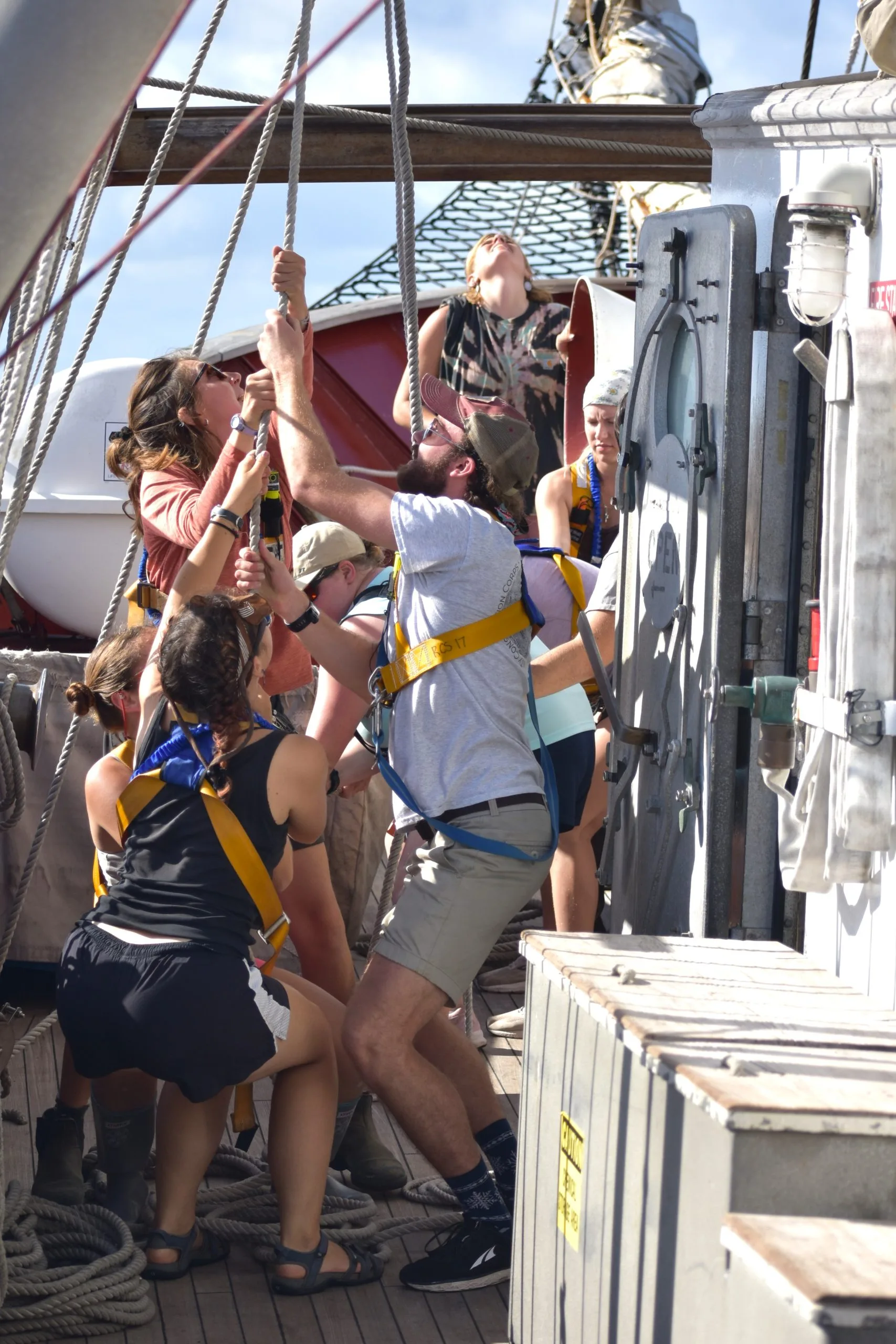
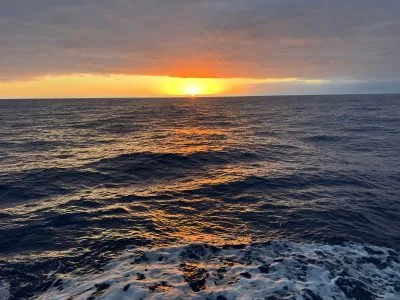
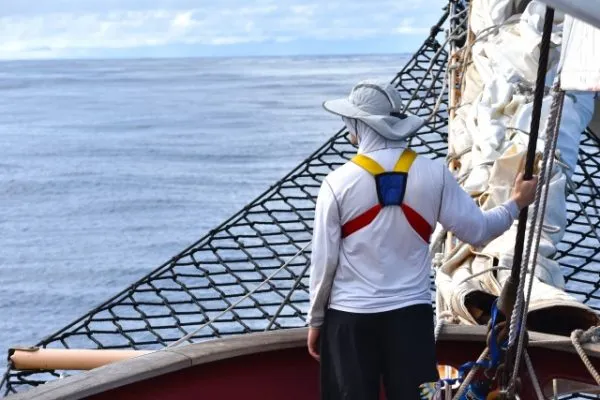
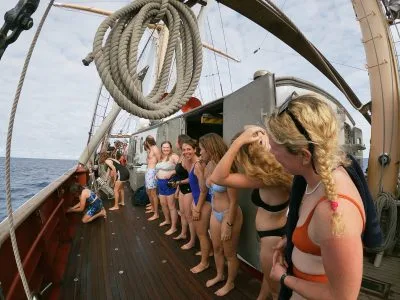
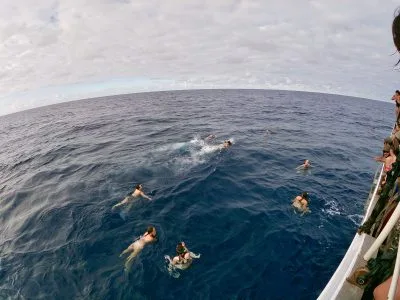
Welcome back to Stories at SEA! We started our second week at sea already over 900 miles from San Diego. It is a difficult thing to describe what the open ocean looked like, and even now, several months after the end of the voyage I am forgetting what it really felt like to see nothing but horizon, big sky, and endlessly rolling waves. As my mom told me when I returned home, you were just a “tiny dot in a huge expanse of blue,” referring to the live map on SEA’s website. Although the landscape – or seascape – seemed unchanging, there was variety in the shape of the waves, the patterns on the sea surface, the cloud formations at the horizon, and the wind shifts. With patience, these details could become as enthralling as people-watching on a busy sidewalk. As Stella Streufert explained, it’s difficult to be bored of the open ocean if you let yourself really observe your surroundings and it can feel like anything could be just around the corner.
The weather during this second week, and indeed for the remainder of the voyage, was dramatically different than the first week onboard. Temperatures and humidity levels rose, laundry rarely dried, and squalls became almost daily occurrences. This change was because we had entered the Intertropical Convergence Zone, an area in oceans characterized by little wind and squalls. While we always tried to avoid squalls, sometimes they were unavoidable; in which case, we closed watertight doors, doned rain jackets, lowered sails, and prepared to get wet! A little rain and weather wasn’t going to keep us from doing science, though, since we sail for science!
In this episode, we hear a lot about the labs onboard – the wet and dry labs – and the instruments we got to work with on a daily basis. The first haiku mentions a new vocab word for all you non-sailors; focsle (really forecastle, but shortened dramatically to focsle) is the very front of the boat below decks where there were student bunks. Since it’s the very front of the boat, the up and down motion of the ship was more pronounced hence the bouncy castle reference. Back to scientific instruments. Deploying the CTD was always an involved, multi-hour process, and I could always tell when it was being deployed because the boat would seem strangely still and silent, as we adjusted the sails to prevent forward motion to safely deploy the instrument. We hear from Dr. Vero Carignan this week who talks about the CTD and what it’s like on deck to deploy the instrument. Vero rocked her role during these deployments particularly by leading us all in a series of squats for every 100 meters the CTD descended (or ascended) in the water. Along with the other scientists onboard, Vero helped students with lab and project work. We hear from Diego Fernandez, Katie Power, Lexi Valachovic, Stella Streufert, and Kelly Morgan (one of the three assistant scientists on the crew) about using the spectrophotometer, an instrument that uses light to measure characteristics of water samples. Luckily, that procedure didn’t require staring into a microscope in heavy swells, but as Lexi mentions, you did have to be really careful with the glass cell that contained the water sample.
On the project front, we hear from Diego Fernandez, Henry Hua, and Kris Riddle about their research interests which included looking at the stratification of water masses and the distribution of organisms in relation to nutrients like nitrate and phosphate. Calvin Lucido and Parker Rehmus talk about the carbon cycle in the ocean and the capacity for the ocean to store large amounts of carbon in a variety of forms. They also introduce an idea that Vero talks about too; much of what we were doing could only be done on a ship and being able to experience the ocean and accompanying research first hand was a really remarkable experience.
Even in the midst of hot humid days, there was a lot to appreciate about being on the Pacific Ocean. Besides, we were offered relief from one very hot humid day when we got to swim off the ship into 4,467 meters of water, just a little deeper than your average swimming pool. It wasn’t very cold, but it was very clear as Calvin mentioned. Just that morning we had done a test to measure the transparency of the water and it was 30 meters. The water was a beautiful color, a blue so deeply blue it was unlike anything I’d ever seen closer to land.
And that’s it for this week on Stories at SEA! Next week at our halfway point in both the show and the voyage, we’ll hear about crossing the Equator, and how the Robert C. Seamans became the stage for the infamous maritime traditions that accompany greenhorn sailors as they traverse hemispheres. Thanks for listening and fair winds! Many thanks to Olivia Chiota, Lexi Valachovic, Calvin Lucido, Stella Streufert, Kris Riddle, Ali Fox, Katie Power, Henry Hua, Rikki Held, Keeghan Ryan, Dr. Vero Carignan, Kelly Morgan, Diego Fernandez, Parker Rehmus, and Brighton Hedger for sitting down to chat with me for this episode, to the entire crew of the Robert C. Seamans for letting me take time each day to interview in the aft cabin, and to Dr. Sarah Kingston for her photograph that was the inspiration for the podcast cover art.